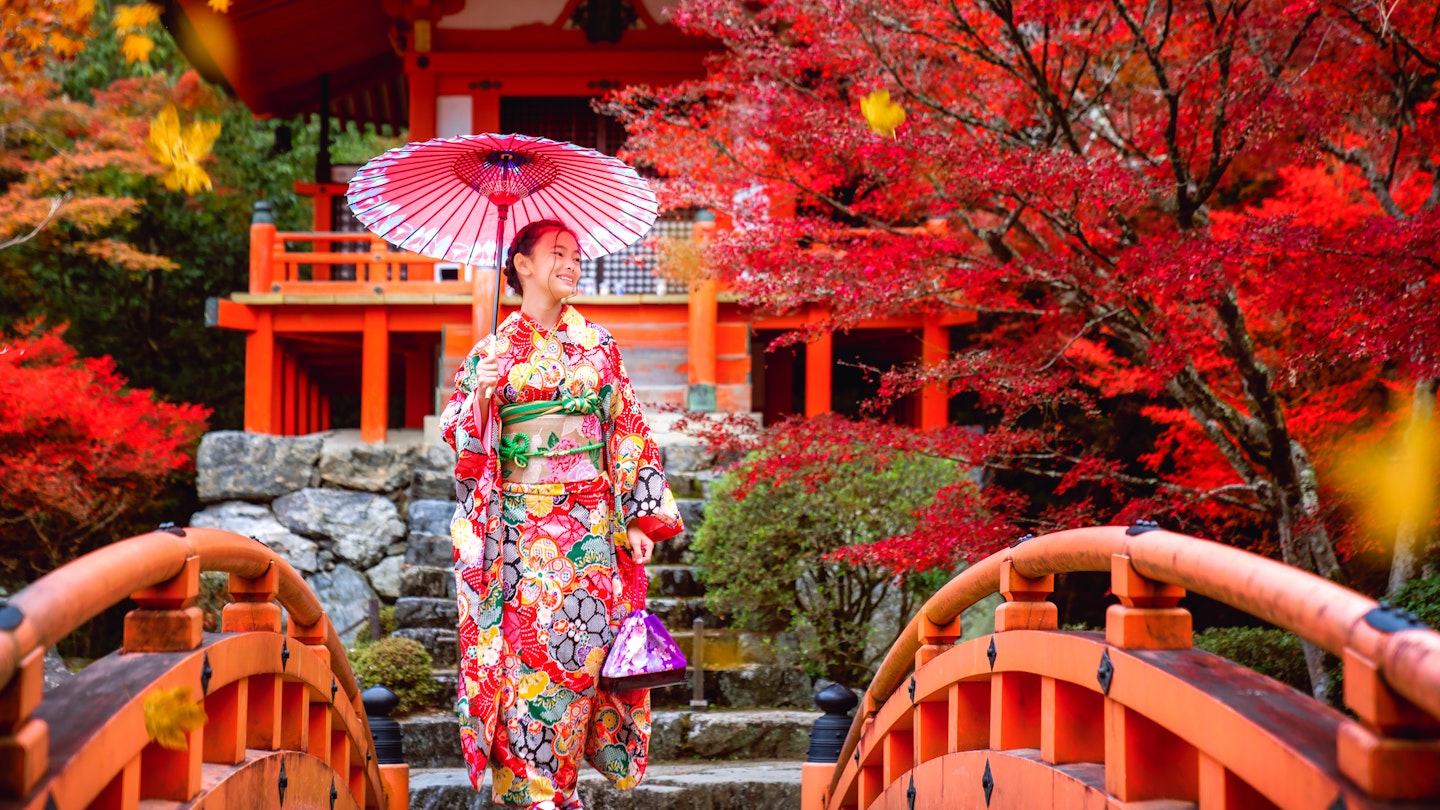Best Times to Visit Japan – A Seasonal Guide
Japan may be small, but with its captivating blend of tradition and modernity, alongside bustling cities and stunning countryside, it offers a mightily enriching experience to visitors. No matter when you choose to visit, you’re in for a trip of a lifetime in Japan.
In spring, the blossoming of the sakura (cherry blossom trees) creates a breathtaking display that transforms the country into a vision in pink, captivating travelers from all over the globe. Fall welcomes the exquisite koyo (autumn foliage) season, while summer unfolds a perfect window for summiting Mt. Fuji. Winter is an ideal time for skiers, as Japan’s slopes are blanketed with some of the finest powder in the world.
Whether you’re looking to plunge into the crowded streets of downtown Tokyo or find zen-like peace amidst tree-cloaked mountains, there’s a season that fits your travel style in Japan.
April and May: Cherry Blossoms and Cultural Experiences
The cherry blossom season from April to May is the peak travel period in Japan. Locals and visitors flock to parks and gardens to partake in hanami, the annual tradition of reveling in the spring bloom. Picnicking under a cherry blossom canopy is a bucket-list experience, complemented by a variety of seasonal treats, from cherry-flavored desserts to unique noodles.
While this time is beautiful, be mindful of the sizeable crowds and higher prices. The cherry blossoms bloom over a two-week span, fluctuating based on weather and geography. Generally, they appear along the “Golden Route” in late March to early April, making April a reliable month for planning a visit.
As the cherry blossoms fade, travelers should prepare for Golden Week in early May, characterized by warm weather and national holidays. Hotel prices typically skyrocket, with public transportation and attractions brimming with visitors.
In mountainous regions, outdoor activities like hiking, mountain biking, and camping reign supreme, though some alpine trails may remain closed until July. Urban areas offer an array of bike explorations or rooftop gardens, making it a wonderful season to indulge in Japan’s vibrant outdoor culture.
June and July: Great for Alpine Adventures and Spectacular Fireworks
June and July present prime conditions for hiking in the Japanese Alps, inviting outdoor enthusiasts to escape the city heat. Early June offers lovely weather, but by late June, tsuyu (the rainy season) can deter many hikers, resulting in less crowded trails. This also means potential savings on travel costs.
As the rainy season tapers off in July, firework festivals begin to light up the night sky, with locals dressed in traditional attire for events like Tanabata. The famous Sumidagawa Fireworks Festival in Tokyo is particularly recommended for a memorable experience.
August: Embrace the Heat and Cultural Festivities
Mid-August marks the bustling O-Bon (Festival of the Dead) season, accompanied by soaring temperatures exceeding 38°C (100°F). Many Japanese people return to their hometowns during this period, which results in hectic transportation and rising accommodation prices.
For a different experience, consider traveling to the Okinawa Islands, where scuba diving conditions are excellent. The renowned cosplay festival in Nagoya draws substantial crowds, so advanced planning for accommodation is recommended. Alternatively, cooler mountain locations or hikes on Mt. Fuji are popular as climbers make the most of the mid-July to mid-September climb season.
September to November: Ideal for Hiking and Fall Foliage
September sees warm and drier days, despite the occasional typhoon. Coastal towns like Kamakura and Shimoda deliver sunny afternoons, making it a delightful time to enjoy Japan’s beautiful beaches.
By late September, autumn foliage begins to paint the mountains with vivid colors, drawing crowds to gardens and hiking trails. October features pleasantly warm days ideal for outdoor excursions, where vibrant hues dominate the landscapes.
Late November is particularly scenic for hiking through areas like Mt. Takao, where the autumn leaves persist longer than the cherry blossoms, resulting in a quieter experience for visitors.
December to March: Snow and Winter Festivities
Winter offers uncrowded sights throughout Japan, with accommodation prices lower, except in ski resorts. December brings clear skies and a festive atmosphere filled with year-end parties and holiday decorations.
As January begins, tourism resumes amidst snow-covered landscapes, especially in popular ski areas like Hokkaido and Nagano, known for their exceptional slopes and hot spring experiences.
February, typically the coldest month, is perfect for warming up with hot sake and ramen, and features the Sapporo Snow Festival showcasing stunning snow and ice sculptures. By March, as the last remnants of winter linger, preparations for the first signs of spring begin to emerge, marking the onset of festival season across the nation.
Each season in Japan offers a unique experience, enhancing your journey through this remarkable country. Explore seasonal festivals, natural wonders, and cultural practices that make Japan a destination worth visiting throughout the year.




